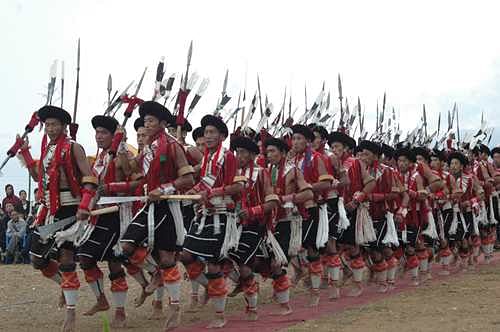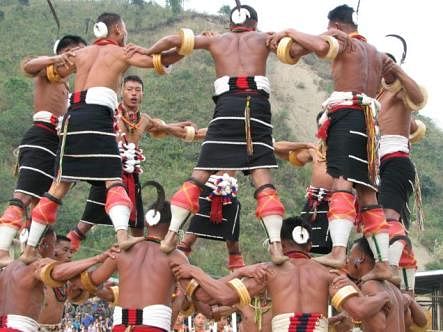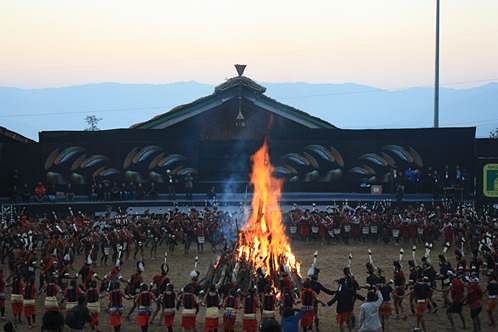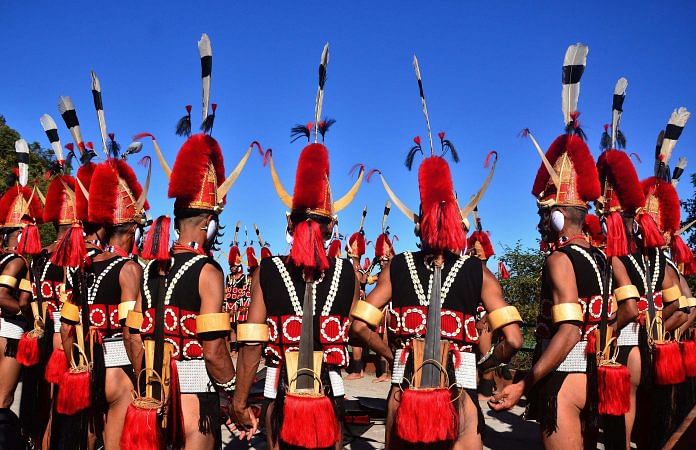As Nagaland goes to polls amid uncertainty and anticipation around the Naga Peace Accord, ThePrint brings you an explainer on the people and culture of a region, which is witness to India’s oldest separatist movement.
Who are the Nagas?
The Nagas broadly refer to a cluster of tribes that live in Nagaland and a few other northeastern states. For more than half a century, the Nagas have remained an elusive part of India’s history. Similar to identity formations in the Indian subcontinent, the Naga identity only began to take shape after the advent of British occupation of the Naga Hills district in 1881. The origins of these tribes are still under dispute in the absence of early documentation and due to a variety of oral histories that contradict each other.
How many tribes are there in Nagaland?
Officially, the state recognises 16 tribes as Nagas. However, the idea of ‘Greater Nagalim’, the Naga-inhabiting areas — takes into account more than 30 tribes and spread across Nagaland, Manipur, parts of Assam and Arunachal Pradesh besides some areas in Myanmar. Each tribe has its own unique dialect and customary laws and practices, which are being used to resolve conflict and settle disputes.

Is headhunting still prevalent among the Nagas?
According to some experts, the headhunting was in practice in Nagaland until early 1980s. The custom involved preserving a “person’s head after decapitating him, which was often the cause of inter-village wars”. The Naga warriors of yore would raid settlements in the plains and valley in search of heads as they believed that blood sprinkled on the fields was good for harvest. It was also a sign of masculinity, which improved your chances in marriage, sitting at the village council and chieftainship among tribes such as Ao, Zeme, Zeliangrong, who don’t follow a hereditary system.
What types of food do they eat?
Like other tribal groups in the northeast, the Nagas live on all things that grow and run wild. With no access to fertile lands for large scale agriculture, they live on produce grown from shifting cultivation and for all other nutritional requirements (like pulses, spices), have relied on trade with the Ahoms of Assam. Nagas are by and large non-vegetarian but there’s no uniformity of meat delicacies across all tribes.
The obsession over what Nagas eat, particularly the meat they eat, stems less from genuine curiosity than ethnocentrist lens of civilized societies, guilty of exoticising and appropriating native indigenous cultures to suit their sensibilities and politics. Here’s a rare starter guide on Naga cuisine that does neither.
Do they roam around naked?
This question is usually met with much bemusement from the Nagas, known for their vibrant textile range and sartorialist taste in western attire, who don’t particularly hold Indian fashion or Bollywood to high standards.

The ‘Naked Nagas’ was one of the most unfortunate misnomers to refer to the Naga tribes living in the former province of British-ruled Assam. The term was used as a title of a 1939 book by Austrian anthropologist Christoph Von Fuhrer-Haimendorf. Haimendorf had spent considerable amount of time in what is loosely called ‘Eastern Nagaland’ — parts of which fall in the present-day Myanmar — which was still to receive the touch of Western civilization by American missionaries.
How old is the Naga demand for independence?
This demand is as old as the Simon Commission that was constituted in 1927. During the World War I, Naga soldiers were even sent to fight with the British Labour Corps in France. This overseas exposure helped the veterans to start consolidating the Naga identity, which led to the formation of the Naga Club in 1918, comprising tribes mostly from the western region (Aos, Angamis, Sumis, Rengmas, Chakhesangs and Lothas). Although respective tribal hoho (apex representative body of a Naga tribe) had been formed, the Naga Club was the first to make a public declaration of the Naga territory as distinct from mainland India in their memorandum to the Simon Commission in 1929. They wrote:
It was the establishment of the Naga Hills District Tribal Council in April 1945, composed of 29 members representing tribes based on proportional representation that finally gave legitimacy to the Naga political struggle. Less than a year later, this became the Naga National Council, which declared an “independent Nagaland” on 14 August 1947 in a telegram dispatched to the Secretary General of the United Nations in New York.
How did it begin?
Angami Zapu Phizo, regarded as the father of the Naga separatist movement, set up the first civil society groups and was instrumental in drawing up a ‘constitution’ for the Naga government and the guerilla army by 1956. After a ceasefire agreement in 1964 for a peace mission undertaken by the Indian side, Thinoselie Keyho and Thuingaleng Muivah made a trek to the Chinese border.
Phizo even managed to make a case for the Naga cause in Britain, where he stayed in exile for a long time while a fully functional Naga government was on back home. However, infighting and differences between the tribes had weakened the resolve of the Naga leaders. It is believed that the Indian government had exploited the situation and an agreement was eventually signed in what is known as the Shillong Accord in 1975.
After purging the old leaders for betraying the cause, Isak Chishi, who served as the foreign secretary of the Nagaland government, and Muivah broke away and founded what came to be known as NSCN(I-M).

What is the status of the peace process?
There are at least three factions of NSCN today, out of which only the I-M faction has been in a ceasefire agreement with the Government of India since 1997. In 2015, it signed the historic ‘Framework Agreement’ for the Naga Peace Accord with the BJP-led Central government, to bring a final solution to the Naga issue. This issue is not so much about independence anymore but shared sovereignty with a separate constitution for the Nagas, who already enjoy a special status of Article 371A in the Indian Constitution.




‘‘Do they roam naked?” No they do not. What an Abhorring title to begin with considering the scarcity 0f resources of some the people(Nagas) dressed semi-clothed, not to mention their rich collections of different number of dresses from each of the different tribes.
The Nagas are very distinct group of people it will be a grave mistake to approach them with a superficial view of thinking or taking them as Indians as they are not…